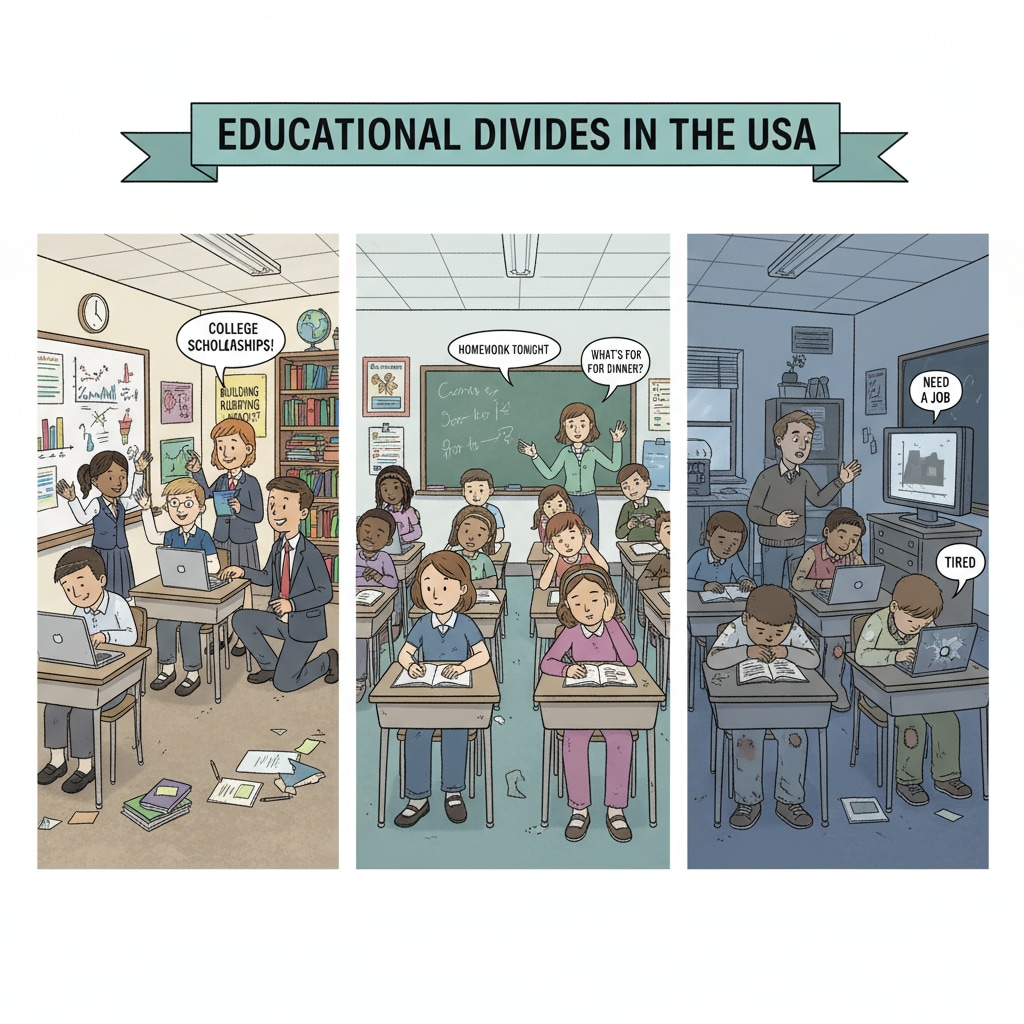The US school system, often hailed as a cornerstone of opportunity, has in fact become a powerful social class screening tool. This phenomenon has far – reaching implications for the distribution of resources, social mobility, and the very concept of education in America.

As we delve into the workings of this system, it becomes evident that there are deep – seated ideological and structural issues at play.
The Ideological Trap of “Education” and “School”
In American society, the terms “education” and “school” are often used interchangeably. However, this is a significant ideological trap. Education, in its true sense, is a broad concept that encompasses the acquisition of knowledge, skills, values, and the development of critical thinking. On the other hand, the American school system, as it stands, has been molded by various social and economic forces to primarily serve as a mechanism for social class reproduction. Education in the United States on Wikipedia For example, the curriculum in many schools is designed in a way that reflects the values and interests of the dominant social classes, leaving students from lower – class backgrounds at a disadvantage.

Structural Inequalities in the US School System
One of the most glaring structural inequalities in the US school system is the funding disparity. Schools in wealthy neighborhoods receive significantly more funding compared to those in poor areas. This is mainly due to the property – tax – based funding model. As a result, students in affluent schools have access to better facilities, more experienced teachers, and a wider range of educational programs. In contrast, students in underprivileged schools often struggle with overcrowded classrooms, outdated textbooks, and limited extracurricular activities. Education in the United States on Britannica Another aspect is the standardized testing system. These tests are supposed to measure student achievement, but they are often biased towards students from higher – class backgrounds who have had more exposure to test – prep materials and resources.
Moreover, the tracking system in American schools also contributes to class stratification. Students are grouped based on their perceived abilities, and this often leads to a self – fulfilling prophecy. Those from lower – class backgrounds are more likely to be placed in lower – level tracks, which offer fewer opportunities for advanced learning and future success.
In conclusion, the US school system, as it currently operates, is far from providing equal educational opportunities. It has become a system that reinforces social class differences rather than breaking them down. We need to reimagine education in America, moving beyond the current model of class screening and towards a system that truly nurtures the potential of every student, regardless of their social class background. This requires a fundamental rethinking of educational policies, funding models, and the very purpose of schooling in the United States.
Readability guidance: The article uses short paragraphs to present ideas clearly. Lists could be further developed in future expansions. The passive语态 is kept to a minimum, and transition words like “however”, “for example”, and “moreover” are used to enhance the flow of the text.


